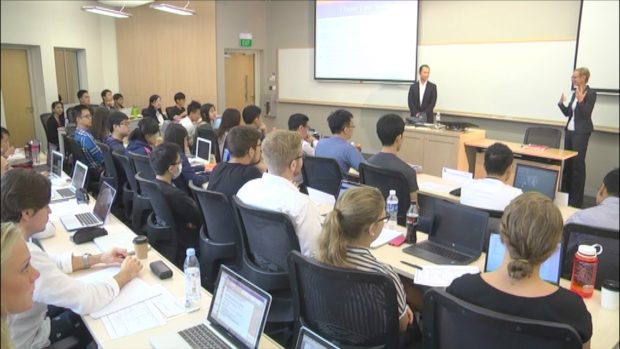The development of the leading countries led to the formation of a new economy – an economy that is based on human capital, innovations, global information systems and new technologies. In order to understand the main driving force of the technological and economical development we should analyse following factors:
Human capital
Human capital is a set of knowledge and skills that are used to satisfy different types of needs of human being and society,that to say all knowledge and skills as well as other qualities of human being can be productively used to create a profit that is the income of both individuals and society as a whole. Human capital, like physical capital, is a good for long-term use. Nevertheless it can become obsolete, physically wear out or it can become outdated even before its physical deterioration takes place, its value can grow and fall depending on changes In the supply of complementary production factors and in the demand for their common products. The value of human capital depends on the production of knowledge.
The stock of knowledge corresponds to these types of capital that are used in our society:
Knowledge that takes form of physical machines, instruments, developments, computer, etc.
Knowledge that is embodied in individuals, with the purpose of obtaining education, qualification, skills acquisition,etc.
Non-embodied knowledge that are objects like: books, textbooks, manuals,etc.
Information technology
In recent years, the term “information technology” is often synonymous of the term “computer technology”, since all information technology is now somehow connected with the use of a computer and Internet.

Information technology is a process that uses a combination of means and methods of collecting, processing and transmitting data (primary information) to obtain new quality information about the state of an object, process or phenomenon (information product),that are:
The development and production of computers and software Communications and mobile services.
Internet access Data processing ( database management systems, algorithmic languages, programming systems, etc.)
Processing of test information (word processors, hypertext systems, etc.)
Processing graphics ( tools for working with raster graphics, tools for working with vector graphics)
Processing of video animation, video, sound (tools for creating multimedia applications,etc).
Communication technologies
Communication technologies are processes and methods of information transfer(collecting, processing, storing, distributing, displaying of data).These methods and process can be stored up in software and hardware.That to say communication technologies include various software, hardware and operating devices on the basis of computer technology, as well as modern means and information exchange systems that provide collection, storage, production and transmission of information. So communication technologies have the key role in technology while transmitting information.
These roles include:
The possibility of prompt transmission to any distances of information of any volume, any form of representation. Storing this information in the computer’s memory for the required length of time.
The possibility of editing, processing, printing, etc.
The possibility to access various sources of information, including remote and distributed databases, numerous conferences around the world via the Internet Work with this information.
The possibility of organizing electronic conferences, including in real time Google translator for enterprises: Google Kit toolkit and Gadget Translator.
The use of modern information and communication technologies makes it possible to organize the optimal interaction between the student and the teacher while transmitting the information.
Author of this article is Patricia T. Park from Los Angeles. Patricia is a contributor at StocksNeural learning stocks platform.
